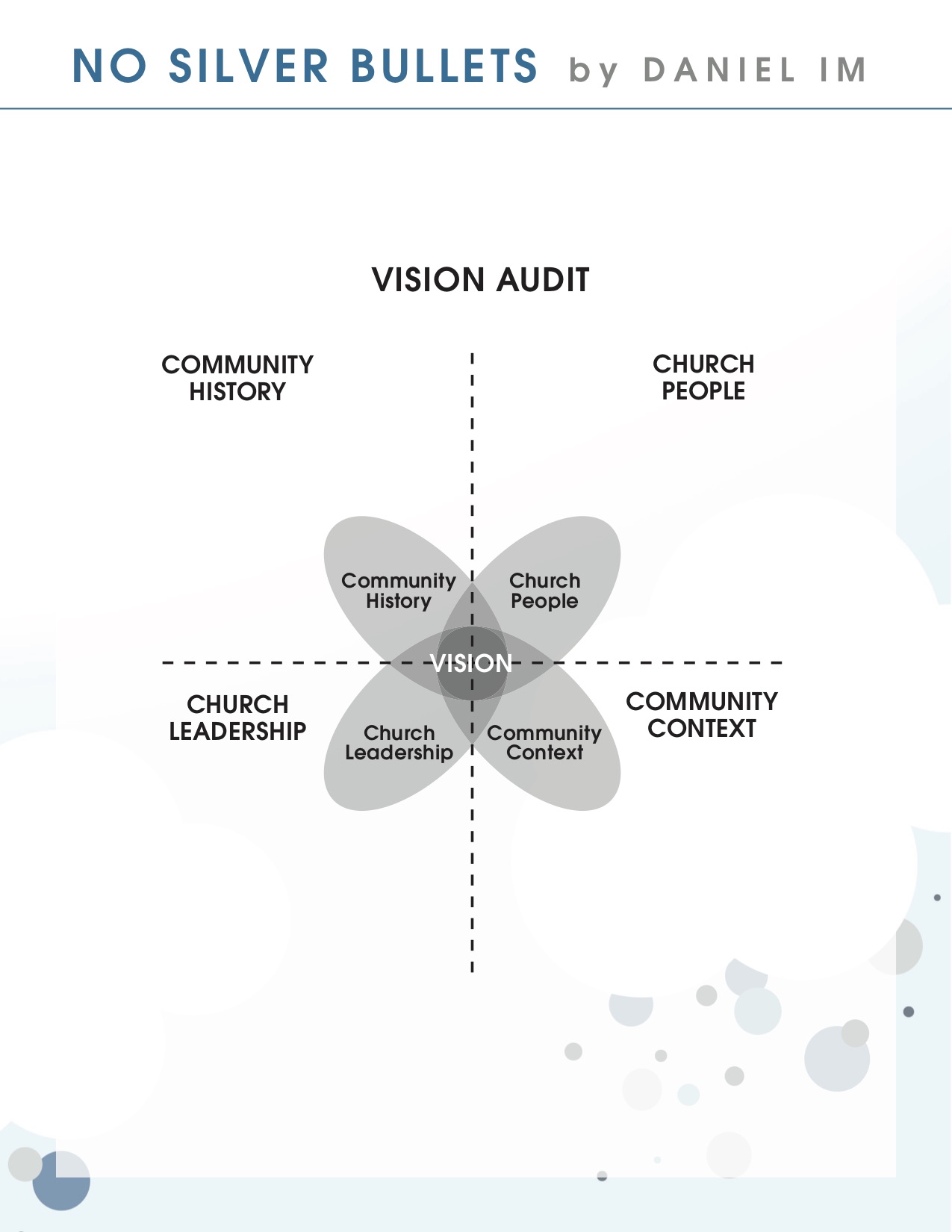 There are no perfect church vision statements.
There are no perfect church vision statements.
If you’re looking to change yours, or create one from scratch, the thought of copying another church’s vision statement has probably come across your mind.
Don’t do it!
While it’s fine to see how others have worded theirs for ideas and inspiration—whatever you do—don’t short circuit the process.
Now obviously, copying someone else’s vision statement would be easier and faster, but in this matter specifically, the process is as important as the outcome (I’ll explain why later on). And while the foundation for every church’s vision statement is built with the same building blocks of the Great Commission and the Great Commandment, the way you put them together needs to be different than the way the church down the road did theirs. This is because the vision statement for your church is for your church—it’s not for the church down the road! So your vision statement needs to be contextualized and worded into language that your church understands.
One more note about vision statements, and then I’ll get to why the process is as important as the outcome.
A great vision statement is like the kingdom of God—it’s already, but not yet.
It needs to be feel real and tangible, but not fully here, since vision is more about the future than the present. It’s more like a foretaste, than it is a full meal. Here’s how I describe it in my book, No Silver Bullets.
Vision is about the preferred future. It’s the ability to conceptualize a picture of a golden tomorrow that does not yet exist. It’s about seeing both the difficulties and possibilities so clearly that you can actually visualize a different reality than the one you can see with your eyes. Simply put, vision is about painting the dreams that God has laid on your heart for all to see. In order to discover those God-given dreams, you need to start by considering “everything to be a loss in view of the surpassing value of knowing Christ Jesus my Lord” (Phil. 3:8) so that you can stop wondering “what kind of mission God has for me,” and instead begin asking, “what kind of me God wants for His mission.”
So how do I create a church vision statement?
You need to start with the understanding that it doesn’t all fall on your shoulders. Your church’s vision statement isn’t something that you need to create out of thin air, or come down from the mountain with.
It already exists—your role as the leader is to mine it out of your people.
And here’s why: God has a unique role for your church in your neighborhood and city. He has brought the people in your church together specifically for a purpose. There is a unique mix of gifts, talents, and callings in your church that doesn’t exist in any other church in the world. So your role as a leader is to discover the way that God is already moving in your midst and then articulate that in a compelling and infectious way through a vision statement.
But you can’t do this without prayer
I love brainstorming, whiteboarding, and writing on big sheets of paper on the wall. It’s invigorating and incredibly life giving. In fact, you can do a lot of work clarifying what is, in order to determine what can be, via exercises like these.
However, you must not and should not do this without prayer. So that trite little prayer that you do before a full day of vision work does not cut it. You need to soak and saturate the entire process in prayer, since ultimately this is about discovering God’s vision for His church, not crafting your vision for your church.
So, before you bring out the whiteboards, make sure you set aside time to spend in prayer and in listening to your church.
1. Spend time in prayer
Since God has a vision for His church—that you happen to be stewarding and leading at the moment—don’t you think he’d want to let you in on it? And wouldn’t prayer be the place to find out?
So before you begin whiteboarding your new vision statement, schedule a night of prayer and worship with your leadership team. Begin praying for your church, your neighborhood, your city, and the lost. Read the Scriptures, worship, pray, and spend time with the One who holds and knows the vision for your church!
Make sure that the worship is experiential, since not everyone connects with God in the same way. You can have stations for journaling, others for communion, another one for art and illustrations, and so on.
Be creative! You don’t need to end the night with a written down vision statement—in fact, that’s not the purpose. Instead, you just want to facilitate a time where your leadership team is approaching the throne of God together in worship. You’ll be amazed at the ways that God can and will move.
2. Listen to your church
As you’re praying about the vision for your church, I’d encourage you to preach a sermon series on the early church. This will not only give you an opportunity to study ecclesiology, but it will provide a forum where you can ask your congregation to share their thoughts on the church.
Throughout the weeks that you’re preaching the sermon series, schedule time to meet with a wide range of your members to get their thoughts on the church: men, women, Gen Z, millennials, Gen X, boomers, and people of different ethnicities. In fact, several of your leadership team members should do the same. If everyone takes copious notes, and then someone summarizes them before your next leadership team meeting, there will be patterns that emerge.
After you do all of that, I’d encourage you to go through the Vision Audit that I outline in chapter 7 of my book, No Silver Bullets. Here’s an image of it.
If you work through this vision audit, then do the strategy and values audit, you will be well on your way to crafting and creating a vision statement.
See what I mean when I said earlier that the process is as important as the outcome?
Without starting in prayer, spending time listening, and completing these audits, you will naturally copy another church’s vision statement, and in turn, end up missing the incredible way that God wants to speak to and through you into your community
Don’t short circuit the process.
